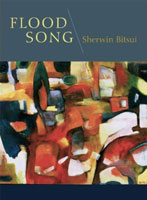
This is an old review but it bears repeating, DONCHATHINK? Is it "bears" repeating, or "bares" repeating? When I use the word "bear" the pain etc... I can't help but giggle -- English is SO silly, I swear! The cover art for this issue of Kenyon Review is by Luminary Extraordinaire Leslie Marmon Silko. I heard that at last year's Denver AWP someone swiped a whole big box of them. Isn't that whack?! But enough of my rambling, here's the review, written by some white guy with a funny name, who should be thanked. Someone give Nate a salmon, eh?
The Kenyon Review
Winter 2010
Quarterly
Review by Nate Whipple, Utah State University
This issue is dedicated to work by North American indigenous authors. With work from emerging voices like Sara Marie Ortiz, Eddie Chuculate, and Eric Gansworth as well as the acclaimed writers like Leslie Marmon Silko, LeAnne Howe, and Joy Harjo, the writing in this issue is as vibrant and dynamic as the indigenous literary tradition it represents. Compiled here is a stimulating survey of indigenous poetry, fiction, and nonfiction.
Indigenous life and culture awareness is greatest at the intersections of “land, culture, and community” (a phrase repeated five times over the course of the interview with Simon Ortiz that opens the collection). These intersections inform the work of each of the indigenous writers represented here and help unify their perspectives as each attempts to understand nature of individual identity in contemporary culture, indigenous or otherwise.
In the remarkable assortment of indigenous poetry collected here, a noteworthy gem is “A Blur of Echoes.” This deceptively simple poem by Marc Turcotte speaks with clarity and grace to the blurred boundaries that exist at the intersection of self, other, and community. The poem’s form (three blocks of text that read more like paragraphs than stanzas) indicates that identities aren’t the only things being blurred in indigenous literature and its opening provides what could be an instructive line for reading the entire collection: “Let’s forget everything we know to be true about you and me.” Turcotte’s evocative poetry is one of many works in the issue that illustrates the profound possibilities for understanding interconnectedness that unity among individuals and cultures can offer.
LeAnne Howe’s short story, “Due Diligence, or How I Lost Ten Pounds,” illustrates how interconnectedness can also mean misconceptions, miscommunications, and miscomprehensions. Told with a sardonic humor characteristic of much indigenous fiction, this clever story about a Choctaw author explores the complications of unity without understanding and the importance of language to individual and cultural identity.
Each of the thoughtful poems, stories, and essays in this issue demonstrates a profound respect for the reciprocal relationship between language and self and the role of literature in the formation of identity, individual or otherwise. But as Simon Ortiz, who serves as special guest editor for this special issue, points out in a moving interview with critic Janet McAdams, indigenous literature has been met with neglect. The cause of this neglect, says Ortiz, is a lack of critical attention, a “marginalization resulting from discrimination by mainstream academia and critics.” This is probably why this issue of The Kenyon Review contains perhaps more critical writing than any other. A critical essay by Angelica Lawson charts the role of language in the bi-lingual poetry of Ofelia Zepeda. Language, she notes, is essential to cultural resistance and resilience in the face of change, loss, and amalgamation.
Ortiz’s goal for this issue, he explains, was to contextualize indigenous literature in order to promote indigenous language, increase cultural awareness, promote and to give the literature and culture of indigenous people the attention they deserve. If there’s anything we need more of, it’s cultural awareness. If there’s one thing this issue of the The Kenyon Review demands, it’s more of our attention.
http://www.newpages.com/magazinestand/li





